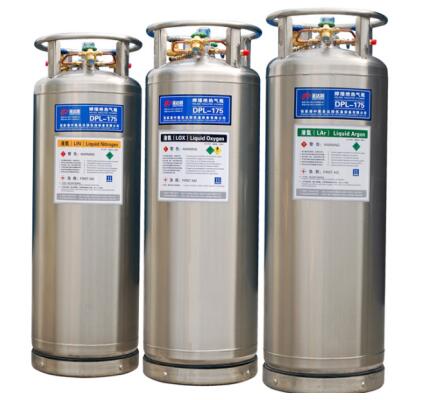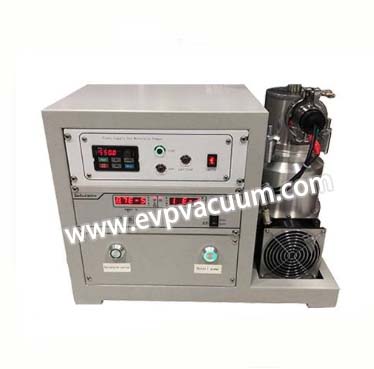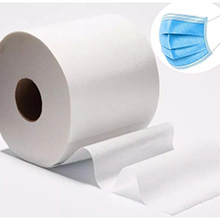Turbo molecular pump station used in Dewars Applications
Introduction
Dewar is also called thermos flask, which is an ideal container and tool for storing liquid gas, low temperature research and crystal element protection.

With the development of China’s industry, the demand for liquefied gas continues to increase. For the purpose of safe transportation and efficient storage, the application of cryogenic liquid storage tanks is becoming more popular, including LNG storage tanks, liquid nitrogen storage tanks, liquid oxygen storage tanks, Liquid carbon dioxide storage tanks, liquid argon storage tanks, etc., among which cryogenic liquid storage tanks based on the principle of vacuum multilayer insulation are particularly effective. However, in actual work, it is not difficult to find that as the storage tank is put into use for an extended period of time, its thermal insulation performance will become worse and worse, and the gas leakage rate will become faster and faster.
Therefore, the reduced vacuum of cryogenic liquid storage tanks not only reduces the storage efficiency of liquefied gas, but also increases the safety risk during storage and transportation. The fundamental way to solve this problem is to restore the vacuum of the vacuum interlayer.
In fact, these problems are caused by the reduction in the vacuum of the storage tank. The cryogenic liquid storage tank is a double-layer tank structure, and the inner tank and the outer tank are insulated by vacuum, which insulates the transfer of heat energy, thereby effectively reducing the physical changes of the liquefied gas in the tank by absorbing heat and vaporizing. However, the storage tank itself and the sealing port of the vacuum interlayer have a certain leakage rate. As time accumulates, the vacuum degree of the interlayer will become lower and lower. In order to ensure safety, the cryogenic liquid storage tank is equipped with a safety valve. If the vacuum degree between the inner tank and the outer tank decreases, the heat transfer speed increases as the vacuum degree decreases. The liquefied gas absorbs heat and vaporizes, and the pressure of the inner tank increases. The safety valve is automatically opened to discharge the vaporized gas. In this way, the thermal insulation performance of the cryogenic liquid storage tank is deteriorated and the gas leakage rate is accelerated.mance of the cryogenic liquid storage tank is deteriorated and the gas leakage rate is accelerated.
Turbo molecular pump station Dewar vacuum unit performance:
Turbo molecular pump station or Dewar vacuum unit, LNG gas cylinder, tank truck, and tank vacuum equipment are used for vacuuming and leak detection of LNG tank truck, vehicle-mounted bottle, Dewar, and cryogenic storage tank. The specific plan needs to be customized according to customer needs and site conditions. This product is equipped with high-end configuration, low noise, low energy consumption, easy to move, and fast vacuuming time.

Turbo molecular pump station Dewar vacuum unit Features:
This equipment is suitable for vacuuming and exhausting a variety of closed containers, including: neon lights, semiconductors, cryogenic containers, laboratory equipment, etc.
Equipment technical parameters:
1. Natural air cooling, no need for water cooling, easy to move;
2. Operating voltage: 220V, 380V;
3. Total power of equipment: 1.3 kW, 2.5 kW, 3 kW;
4. Ultimate vacuum: 1.5×10-5Pa
5. Equipment weight: 85 kg, 120 kg, 155 kg, etc.;
6. Pumping rate: 300L/s, 600L/s, 1200L/s, etc.;
7. Others: It can work after booting, no need to warm up and wait;
8. One or more air inlet ports.
Introduction of Turbo molecular pump station Dewar vacuum unit :
Saving time and improving efficiency for customers is our excellent goal! The LNG storage tank vacuum system is composed of a vacuum pump unit system, and the ultimate vacuum can reach 5.0E-4Pa. The vacuum is directly digitally displayed by the composite vacuum instrument, and the modular design ,easy to use. Portable LNG vehicle-mounted bottle vacuum device, our company promises to ensure that the interlayer vacuum is below the very excellent standard (vacuum powder uninsulated storage tank vacuum degree≦5Pa, LNG vehicle-mounted bottle vacuum degree≦5E-3Pa), based on the data of the on-site compound vacuum gauge As the standard, comparing the original vacuum degree of the interlayer of the storage tank, the effect is self-evident. The insulation quality is up to one year, and the specific plan refers to the site.
The actual operation process of the vacuum system of cryogenic insulation container:
Vacuuming can be started while heating the container, and heating can be performed both inside and outside the container. The steps are:
① First turn on the chip selection vacuum pump. When the vacuum is lower than -0.1Pa, the Roots vacuum pump can be turned on to pre-evacuate the interlayer of the low-temperature insulation container. The pre-heating temperature is 110°C and the pre-pumping time is 1h~2h;
②When the vacuum degree reaches 6.5×10-2Pa, switch to high vacuum and continue with pre-suction. During operation, first close the pre-suction valve and then open the fore-stage valve, and open the high-pressure valve after the emergency;
③Pull a high vacuum, the initial vacuum degree is 6.5×10-2Pa, and the heating temperature is 250~320℃;
④When the heating temperature is 250℃, starting from the pre-pumping stage, the pumping continues for 120~144h, and the vacuum degree reaches 5.0×10-4Pa and ends.
The built-in heating method and its device are suitable for almost all specifications of containers, and it has significant advantages in heating efficiency and energy saving.
The visual suction joint for vacuuming of Dewar tanks produced by our company, one end is tightly sleeved on the outer circle of the vacuum port with an O-ring seal, the other end is a tie rod with a handle, and the other end is connected to the vacuum unit. , The operating speed and trajectory of the plug of the vacuum port of the Dewar can be clearly seen during the entire vacuuming process, and the ultimate vacuum can reach 5.0×10-4Pa when there is no leakage in the pipeline.
Edited by: Catherine Qin; Copyright: EVP Vacuum Pump
Related products:Turbo molecular vacuum system
(The article comes from the Internet. If reprinting is not allowed, please contact our company to delete it.)



